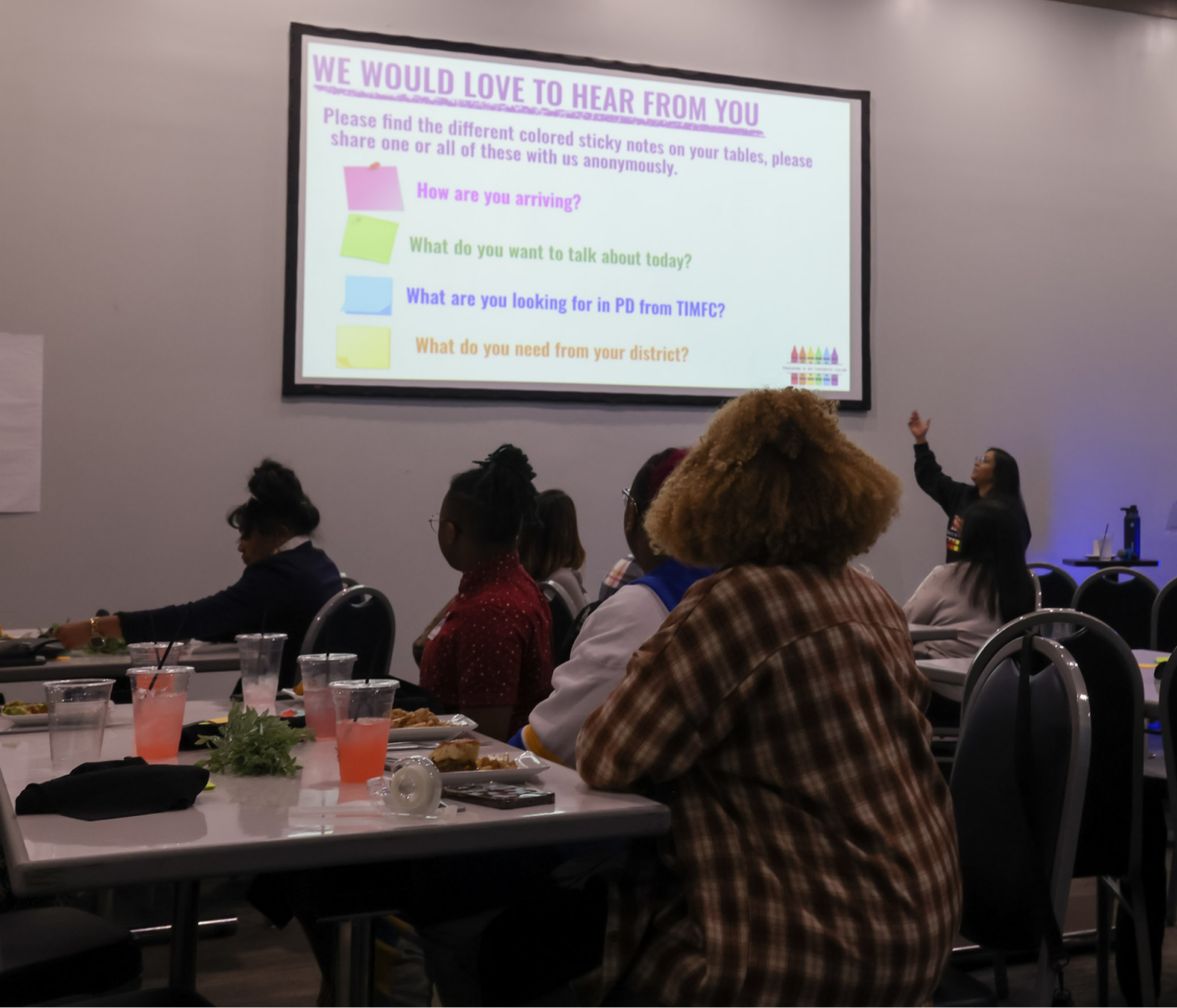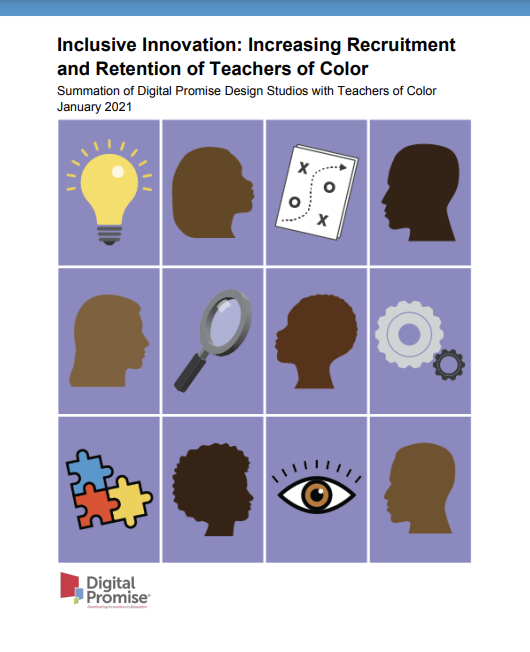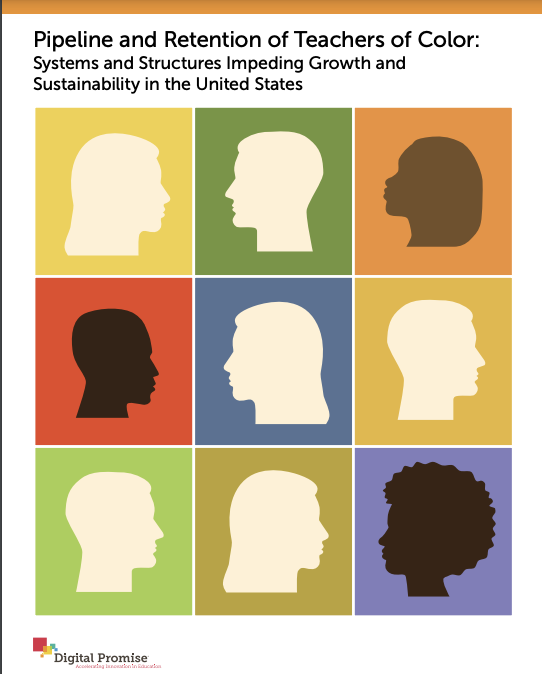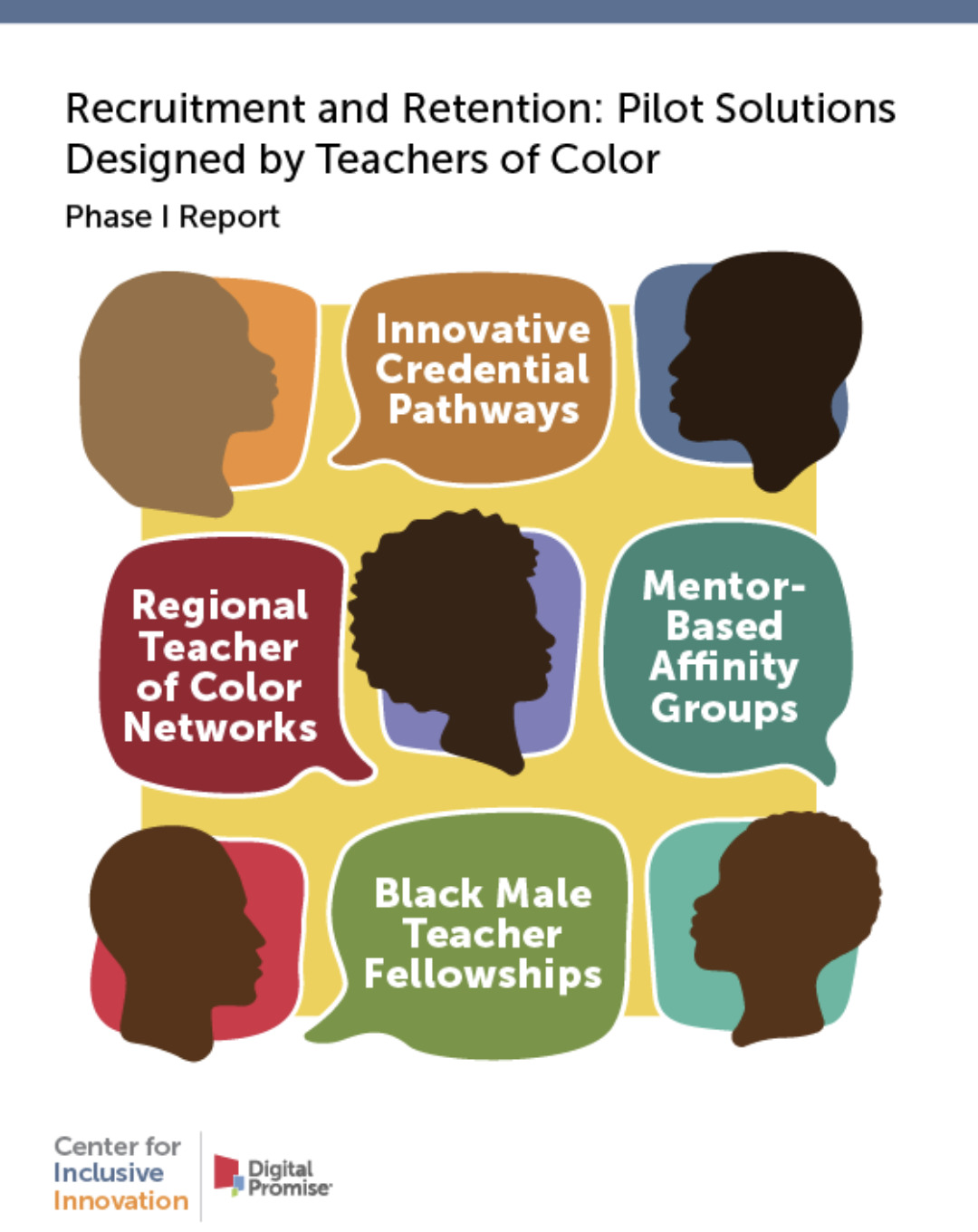With the population of students of color increasing — over 50% of K-12 students are non-white — and data that underscores the value that even a single teacher of color has in positively impacting students of color, it is imperative that district and school leaders address the gap.
Solutions to date have focused mainly on traditional human resources structures, pipelines, and incentives. An opportunity exists to employ an “inclusive innovation” approach to addressing the challenge. Digital Promises’ definition of inclusive innovation:
Remove barriers to the participation of underrepresented individuals, groups, and regions in the education innovation ecosystem to create and catalyze equitable opportunities for individuals to lead, participate in, and benefit from innovation successfully.
Our definition recognizes that to achieve Inclusive Innovation, marginalized individuals must be engaged as leaders, participants, and beneficiaries. To develop practical solutions, teachers must be at the table as leaders, co-designers, and decision-makers in the process.

Photo Credit: Comocrea Johnson with C. Johnson Photography
A report was released in 2019 by the Digital Promise Center for Inclusive Innovation, examining the consequences of the declining number of teachers of color amidst the growing diversity of the student population nationwide. The impact of this loss extends beyond students of color, affecting white students, teacher education, school culture, and the teaching profession as a whole.
For the last three years, the Digital Promise’s Center for Inclusive Innovation has been actively supporting a group of local education agencies (LEA) through a series of Inclusive Innovation processes to engage teachers of color in the research, design, and development of innovative solutions in response to the challenges posed by pipeline issues and teacher shortages.
Empathy interviews: Qualitative research techniques to understand individuals’ or target users’ thoughts, feelings, and experiences.
Design studios: Collaborative workshops district leadership met with teachers and school leaders to ideate, sketch, and develop design solutions for specific challenges or projects.
Coaching calls: Sessions between Digital Promise staff and district teams used to provide guidance, support, and feedback to help the district team overcome challenges, set goals, and make progress.
Strategic planning: Digital Promise staff assisted district teams in defining their long-term goals, establishing priorities, allocating resources, and determining the actions required to achieve their objectives.
Solution sustainability planning: Digital Promise staff and supported district teams ensure a solution or intervention’s long-term viability and impact. Evaluating the economic, social, and ethical aspects to create strategies that promote sustainability and maximize the impact of the solutions.
Click on the links below to learn about the context and solutions created by participating district and community teams.
Reports

Inclusive Innovation: Increasing Recruitment and Retention of Teachers of Color

Pipeline and Retention of Teachers of Color: Systems and Structures Impeding Growth and Sustainability in the United States

Recruitment and Retention: Pilot Solutions Designed by Teachers of Color (Phase I)

Recruitment and Retention: Impact of Pilot Solutions Designed by Teachers of Color (Phase II)
Blogs and Additional Resources

We want to hear from you!
Please take this 5-minute survey and help us serve you better.
